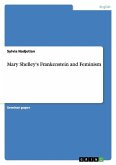Seminar paper from the year 2010 in the subject English Language and Literature Studies - Literature, grade: 1,7, University of Münster (Englisches Seminar), course: Negotiating Representations of Native Americans in Native American Feature Films, language: English, abstract: From the day when the first settlers landed on the American coast it had been reported back to their people in Europe what the Native population is like and how they create their cultural lives. Since that time, Native Americans have been externally conceptualized in various forms, as for example in form of the 'noble savage' or the 'vicious savage', and almost never as having a sense of humor (Gruber 142). Humor in connection with Native American characters has among other reasons been avoided by image makers for it would have allowed recipients to identify with such human characteristics (Gruber 7). This would have meant to invalidate a powerful colonial 'casting mold' for dehuminazing stereotypical imagesabout Nativeness. This hegemonic tool proves to be the most enduring one of colonization by replacing guns and troops (Gruber 157) with occupied Non-Native minds. Filmic representation perpetuated these distorted ideas about Native Americans further by drawing on those widespread clichés and inventing new ones (Gruber 142; Mihelich 130), as for example the Native American 'ecologist' (Cornell 109) or the spiritual 'shaman' living in absolute piece with nature. Thus, till today Native Americans are confronted with the task of dealing with biased images of themselves which are externally imposed on them by the surrounding dominance of Non-Native societies and discourses.In this paper I will discuss how Native filmmakers Chris Eyre and Sherman Alexie effectively use just this powerful genre of popular culture to tackle habituated representations of Native Americans and offer Native versions of Nativeness. In Smoke Signals (1998) they rework and transform existing stereotypes by creating a meta level on which the powerful mechanism of image making is exposed. This meta level can be established through the use of humor (Gruber 35). I will fill a desideratum in this context by breaking the concept of 'humor' down into its single aspects and then applying those to humorous material in Smoke Signals whereby distilling various strategies, not only the means for survival, which are used to pursue the subversive aim. In a structural approach I will have a closer look at which aspects of humor are actually used and what kinds of strategies originate from them considering a mixed audience consisting of Native as well as Non-Native viewers.








